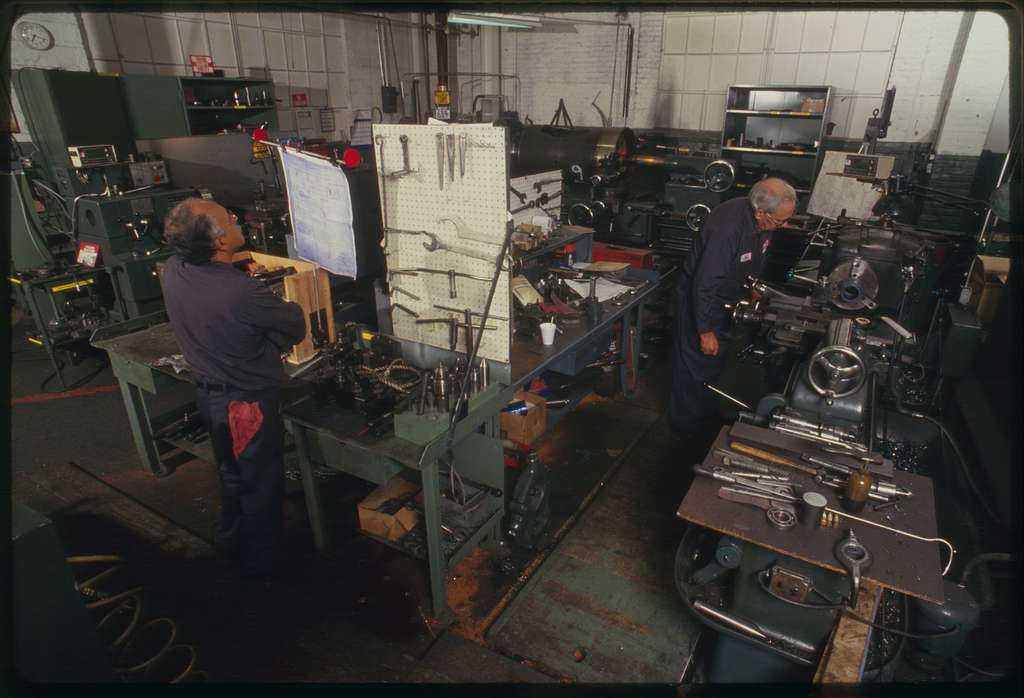7 Things To Look For When Buying Machinery

Help! After spending weeks searching, and thousands of dollars in investments, the machine you bought doesn’t work! That is the scenario you want to avoid at all costs.
When choosing a machine you’re often faced with questions and concerns. Should you get a larger unit or more features? Should it be newer or faster? These concerns often discourage people from purchasing in fear of making a mistake or choosing the wrong machine in haste.
New Vs Old
Having sold machines for more than 30 years, both new and used, I find there is no easy answer. I’ve seen old machines outperform new ones and new machines providing more flexibility. Some new machines are worn out in just a few years and some old machines have another 15 years of use in them.
Looking at the condition of the machine is the first, and foremost, step to take when deciding on a purchase. If the machine is in good shape, new or old, it offers reliability, production output, and hopefully profit.
There are countless things to look for when buying used machinery, but Coast Machinery Group wanted to suggest 7 things to look for when buying a machine of any year, make or model. There’s more to look for when doing your homework, but the following are some questions to consider.
Maintenance Log
Does it come with a maintenance log? 99% of the time there’s not one present, but ask just the same. This will tell you a lot about the machine. Take note of how often regular maintenance was performed and how often parts were replaced. If the last owner was diligent enough to keep a log, imagine how fussy he was on repairs.
Check the Paint
Look at flat surfaces on a machine to see how much it has been used, many machines don’t have hour meters so you have to gauge the hours of use through the equipment body or parts condition. Check for worn paint in the working area, worn paint is usually from high volume use of parts moving over the machine. Look at the top surface and the infeed/ outfeed for this kind of wear. A lot of worn paint means the equipment could have had a lot of use.
Buttons, Handles and Switches
Also look at the buttons or switches, are they worn? Is stenciling missing or color gone from them? If this is the case the machine has had a lot of use. Check to see if handles, switches, and adjustment wheels are damaged or look original. A high use machine or a machine not well cared for will have adjustment wheels or locking handles fitting incorrectly, broken or missing.
Odd Looking Parts
Machines which are not properly maintained will sometimes have replacement parts that are not original or designed to fit the machine. If electrical parts look like they were squeezed into an area not belonging there or seem to be a brand not matching the rest of the machine, this raises red flags. It could mean many operational issues, but also prove difficult in getting replacement parts for you as well.
Tool Drop Marks
A machine that has high adjustment demands needs a lot of attention and will have tool drop marks on the common surface areas. I have seen this on a lot on Edgebanders. No matter how clean these machines are paint chips will appear in areas where tools are often picked up and put down. This usually means the operator must have made many adjustments, and it’s important to find out why. It sometimes means underlying issues or a simple rebuild of certain parts. Either the operator was never trained or the machine has problems and needs lots of tools nearby.
Bells and Whistles
Find out if you really need all of the fancy bells and whistles that come with new machines. Most new machines offer PLCs or fancy options that really don’t improve its usability. You may be paying for something you don’t need or won’t use that can one day cost you a lot to repair or even remove. If the newer option proves to help, then it’s worth the price and the upkeep in repair. If not, it’ll cost you money sooner or later.
OEM Parts
Do your research to find out if the manufacturer still has available parts for the machine. This is usually OEM parts and not so much electrical or pneumatic components as these are available at many suppliers.
There’s no right or wrong decision, but what’s important is doing your research.
If you are in the market for a quality used machine, rest assured Coast Machinery tests every machine and identifies parts that are not working, worn, or broken. We then repair what is not functioning and make sure there’s reliability in the machine. This is often offered in our running warranty.